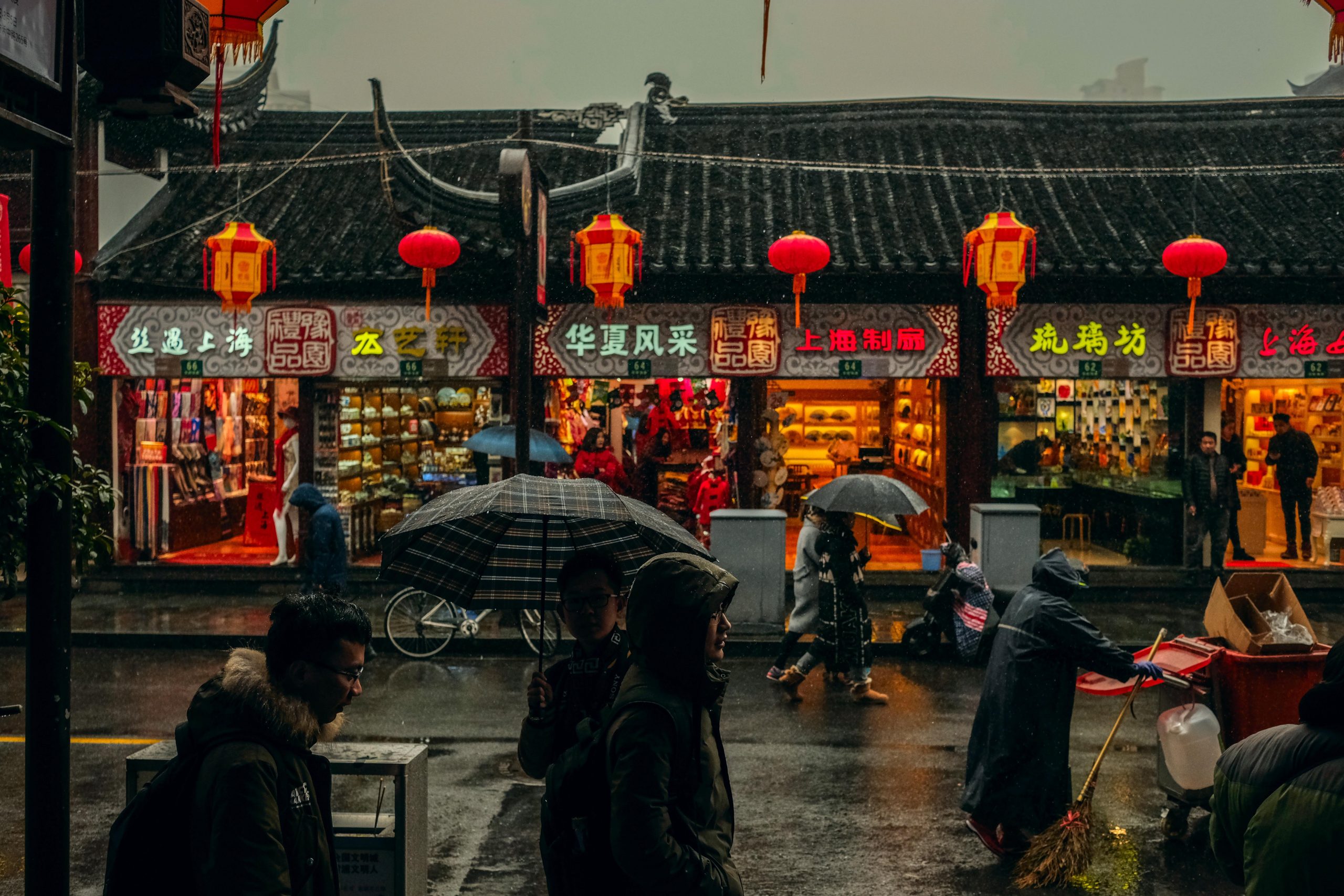61 East Asia: Economic Geography – The Rise (and Fall) of China’s Market Economy
“Poverty is not socialism. To be rich is glorious.”
– Deng Xiaoping
Born in Sichuan in 1904, Deng Xiaoping emigrated from China at the age of fifteen to work and study in France and, later, the Soviet Union. During his time in Europe, Deng embraced Marxist ideology, and joined the Chinese Communist Party upon his return home in 1927. He played a prominent role in the Chinese Civil War, and rose through the party ranks in the 1950s and 1960s. Over time, Deng joined a group of reformers who were critical of Mao’s economic policies, and he was twice purged from the party during the Cultural Revolution, eventually being sent to labor in a tractor factory for four years. By the 1970s, Deng had regained the confidence of Mao loyalists, and returned to work for the Beijing government. When Mao died in 1976, Deng and his allies successfully outmaneuvered Mao’s handpicked successor. By the end of 1977, Deng was the most powerful person in China. Although he never officially held any of China’s highest-ranking political offices, he would be the de facto leader of the country until his death in 1997.
Under Mao, anything remotely resembling capitalism or free-market economics was strictly forbidden. Deng, on the other hand, was a pragmatist. He believed that the goals of communism could coexist with the principles of free-market capitalism, and was willing to implement elements of either system, provided it generated prosperity. Deng famously quipped, “Whether it’s a black cat or a white cat – if it can catch mice, it’s a good cat.”
Deng’s program of economic reform was immense and complex. He began to break up rural communes and lease land to individual farmers who could produce what they saw fit and sell their goods for a profit. He decentralized economic decision making, allowing individual state-owned factories and business to set production and prices based on the free-market forces of supply and demand. He sought to modernize Chinese agriculture, technology, and defense. Deng reconnected China with the international community, making an official visit to the United States in 1979. He allowed individual provinces and municipalities to import machinery from abroad, and to invest in factories that would produce light consumer goods for export – a dramatic break from Mao’s emphasis on economic self-sufficiency.
Probably Deng’s greatest economic legacy, however, was the establishment of Special Economic Zones (SEZs) and other free-market areas. In 1978, five coastal cities were designated as SEZs. In these zones, free-market capitalism was fully permitted. Both Chinese citizens and foreign companies were permitted to create private enterprises, foreign investment in Chinese companies was permitted, as was the sale of foreign products. The SEZs were wildly successful. By 1984, fourteen other coastal cities were added to the list. In 1992, all provincial capitals were permitted to accept foreign investment and establish free enterprises. Today, nearly the entire country enjoys some level of free-market economics.

Photo by Nuno Alberto on Unsplash.
The success of China has much to do with the nature of its market. It is home to nearly a fifth of the world’s population, and as its markets opened, practically every company in the world was eager to do business there. More importantly, China has a vast pool of labor that is exceptionally cheap and relatively well-skilled. Manufacturing corporations from wealthy countries raced to relocate production there, and Chinese-owned start-ups quickly began to supply foreign firms with components and cheap consumer goods.
In 1976, China was an afterthought when it came to global economics. By 2010, it had passed Japan to become the world’s second-largest economy. In 2012, it passed the United States to become the world’s leading manufacturer. China’s economic growth since the ascent of Deng Xiaoping has been nothing short of remarkable. The table below shows the average annual economic growth of China by decade (along with the United States, the world’s largest economy, for comparison).
| Decade | China | United States |
|---|---|---|
| 1960s | 3.4% | 4.7% |
| 1970s | 7.4% | 3.2% |
| 1980s | 9.7% | 3.1% |
| 1990s | 10.0% | 3.2% |
| 2000s | 10.4% | 1.9% |
| 2010s | 7.7% | 2.3% |
A few years ago, it was conventional wisdom that China would eventually surpass the United States as world’s largest economy, perhaps as early as 2035. If the 19th century was the British century, and the 20th century the American century, the current century appeared to belong to China.
While that is still quite possible, recent developments have caused many to temper their optimism about China’s future. As demonstrated in the table above, China’s economic growth began to cool somewhat in the 2010s, and then nearly came to a dead stop with the Covid pandemic of 2020. In that year, its economic growth rate fell to just 2.2%, the lowest since 1976. It is predicted that in 2022 China will experience slower economic growth than the United States, something that also hasn’t happened since 1976.
Some of China’s economic problems are possibly short-term. The war in Ukraine and the Covid pandemic sparked a global recession, resulting in a reduced demand for China’s exports. The Covid pandemic also created supply chain problems throughout the world, and these have been especially costly to China’s export-oriented economy. China has also failed to develop a very effective Covid vaccine, and has so far refused to import vaccines from the West. Covid outbreaks in the country have remained quite common, and China has implemented some of the most restrictive lockdowns of any country. As a result, workers have been kept from their jobs, and China’s economic productivity has plummeted.
But China is also facing some serious long-term economic issues. China’s government, corporations, and banks are carrying a massive load of debt, including risky loans to companies within China as well as to numerous foreign governments and businesses. China’s current estimated debt load is over $50 trillion, which is three times the size of its gross domestic product. Even a relatively low rate of debt default could have a devastating impact on China’s economy.

Chinese real estate, in particular, is a looming crisis. Real estate investments in China were once a surefire economic bet. As the country’s economy modernized, it needed a vast amount of office and industrial space, as well as residences for its increasingly urban population. Real estate now accounts for more than 30% of China’s total economy – a share twice as high as the rest of the developed world. Huge real estate firms poured trillions of dollars into construction. Members of China’s growing middle class also staked their futures on real estate investments to make up for the shrinking social safety net in post-communist China. It is estimated that nearly 80% of household savings in China are tied to real estate. But the market is now badly overbuilt, and China is full of ghost cities made up of empty office buildings, industrial parks, and apartments. Sales of real estate have plummeted over the last year. China’s second-largest real estate developer, Evergrande, recently declared bankruptcy, leaving behind $305 billion in defaulted debt. Others are sure to follow. As the real estate bubble bursts, a number of Chinese banks are likely to fail. This could also have a devastating impact on regional and local governments, which receive a huge share of their funding from property taxes. It is likely that there will be deep cuts in spending on pensions, healthcare, education, and other government services.
Perhaps China’s greatest economic liability is the issue that has haunted the country since the Mao years – it remains an authoritarian state. As mentioned in Chapter 7, authoritarian states tend to be less prosperous than democracies. Of the thirty countries with the world’s highest standard of living, all thirty are democracies.
Political freedoms increased somewhat under Deng Xiaoping, but the country is still not close to being a democracy. And under President Xi Jinping, who took office in 2013, China’s government become more repressive. In particular, Xi views China’s economic elite as a threat to his authority. Crackdowns on private enterprises and businesses, particularly China’s once vibrant tech industry, has further slowed economic growth. Chinese tech giants Alibaba and Tencent have laid off a significant number of workers. And recently, Xi has channeled much of the government’s economic support toward far less efficient state-owned industries, which will increase his political influence, but which will almost certainly harm economic growth.
China also must be concerned about its relationship with its largest trading partners, the United States and the European Union. China’s support of Russia’s invasion of Ukraine, its disastrous environmental policy, its aggressive geopolitical stance toward Taiwan and other neighbors, its numerous human rights violations, and its history of intellectual property theft have foreign investors increasingly wary of doing business there. Major Western companies, such as Apple, have already begun to shift production from China to safer havens in Southeast Asia and elsewhere.
As much as the United States and the European Union rely on Chinese manufacturing, China is far more dependent upon them. It still lags behind in technology fields like semiconductor production, aerospace, biotechnology, and artificial intelligence, and it is very dependent on the rest of the world for imported food and energy. Increased sanctions would devastate China’s export economy, and starve the country of badly needed imports.
A final long-term consequence of China’s authoritarianism is a brain drain. Many of China’s best and brightest, attracted by the prosperity and political freedom of the West, have relocated there. Over the last four decades, more than a million Chinese students have emigrated to study abroad, particularly to the United States, Canada, and Great Britain. It is estimated that more than 70% of them never made a permanent return home. In a global economy increasingly dominated by information, science, and technology, this is certain to have a detrimental effect on China’s economic future.
Did you know?
My Turn!
CITED AND ADDITIONAL BIBLIOGRAPHY:
Buckle, Mark. “Black Cat, White Cat...” China Daily, 2 Aug. 2018, https://www.chinadaily.com.cn/a/201808/02/WS5b728ae4a310add14f385b4a.html.
Byond Travel. Hyatt Beijing China. Photo, 4 March 2020. Flickr, https://www.flickr.com/photos/byond-travel/49617456976/. Attribution 2.0 Generic (CC BY 2.0).


